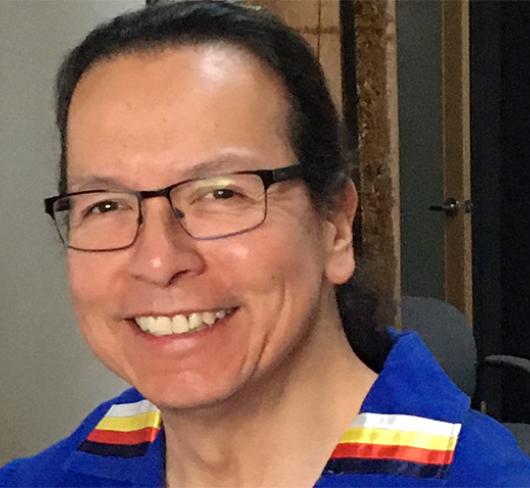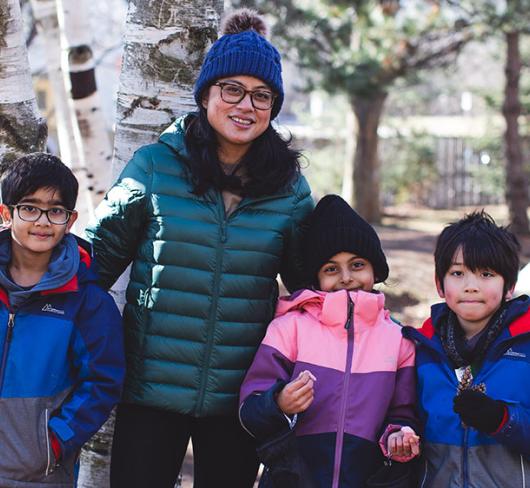
Going Deeper: Finding Your Own Way of Honouring the First Nations Whose Land Your School Occupies
As an educator, I wanted to honour the First Nations of the territories on which we live and go to school. But I didn’t know how. I heard the territorial acknowledgment being read, but I didn’t really understand what it meant. It got me thinking that if I didn’t understand it as the teacher, what did that mean for my students? Like many non-Indigenous Canadians, my journey to bringing Indigenous ways of knowing into my teaching began the moment I started to reflect on my own beliefs, biases, opinions, experiences, knowledge and position in relation to power and privilege.
I realized that to go beyond the land acknowledgment, I had to learn about the history, traditional teachings, perspectives and current issues affecting Indigenous communities. I needed to both learn and unlearn many things.
As part of this effort, I took two courses in First Nations, Métis and Inuit Studies last year, First Nations, Métis and Inuit Studies Part 1 with Lakehead University and Intermediate Division First Nations, Métis and Inuit (FNMI) Studies with Queen’s University. I was amazed at what we learned about the diversity of Indigenous peoples and cultures, the contributions FNMI people have made to Canada, the issues and effects of the education system, the roles of the elders and the positive impacts of culturally relevant classroom environments for FNMI students. As I learned more, I felt embarrassed that I didn’t know Canada’s history and the detrimental effect it has had on Indigenous communities and ways of life. Through my courses, I was introduced to two important books, Where the Pavement Ends by Marie Wadden, a powerful wakeup call to all Canadians, and Decolonizing Education by Marie Battiste, a discussion of the transformation needed in our educational system. Although none of us was alive for the onset of colonialism, Indigenous people have felt its impacts and settlers have reaped its benefits for generations.
We know that early treaty promises were broken and Indigenous people became the targets of colonial policies designed to exploit, assimilate and erase them. The residential school system removed Indigenous children from their homes to systematically strip away their languages, cultures, laws and rights. This is Canada’s history; this is our story.
Systemic oppression continues to this day. Understanding Canada, its history and its present, allows all of us to share in the responsibility of moving forward.
Last summer, I had the opportunity to be part of the Peel District School Board’s Indigenous Education writing team. Together, we worked on updating the territorial acknowledgement our board is using. We worked to bring acknowledgements out of the background and into active consideration for both staff and students. We created resource lists, lesson ideas and a glossary of important terminology we felt teachers could use if they needed more background knowledge (e.g., Wampum belt, the Dish with One Spoon Treaty). The acknowledgements developed by our team were brought to the Indigenous Education Advisory Council for approval.
As a white, settler educator, I feel the weight of responsibility to know the truth about Canada’s history and ensure it is part of my curriculum so my students are also empowered with this knowledge. I see the importance of incorporating Indigenous authors, artists and ways of life into as many different aspects of my teaching as possible. I understand the tension created by Eurocentric education and the need to create a restorative education system that integrates Indigenous cultures, histories and perspectives to make education inclusive and relevant to all students moving forward.
I now realize that prior to my courses I did not have the appropriate skills or knowledge to effectively use my school and board resources to support Indigenous students and to integrate Indigenous perspectives and positions into my practice.
Accessing resources, pursuing additional courses and reaching out to Indigenous community leaders all help ensure that authentic learning and teaching is happening. It is important that each of us in education works to bring about reconciliation.
Some educators and students may have a genuine interest in and personal connection with the territorial acknowledgement, while others will not know much about it. Some educators will have had the opportunity to attend workshops and take courses, but many will not. We all need to share our learnings to help others include Indigenous perspectives in their classrooms and teaching. By amplifying Indigenous voices and perspectives we are equipping our students to challenge systemic barriers and building equity into their understanding of the world around them. It is the responsibility of each of us to share our knowledge and resources and seek support when we need it to do this work.
How You Can Get Started:
- Give yourself the power of permission to acknowledge not knowing and to model openness to learning. Be vulnerable and learn with your students.
- Reflect: What might you be doing that perpetuates settler colonial systems? I realized I was teaching Indigenous studies as a unit instead of an integrated part of all my lessons. I started to make environmental connections to health, clean air, clean water and clean soil and to the seven teachings. I started to see the outdoors as a natural extension of my classroom. Many of my lessons could be taken outside.
- Ask yourself: Do your lessons demonstrate appropriation or appreciation? Cultural appropriation is the taking of culture rather than the consensual sharing of it. Avoid tokenizing activities.
- Do you have a real understanding of the issues currently facing First Nations, Métis and Inuit people? Create a media literacy connection to current issues affecting Indigenous peoples. Teaching Indigenous education should not only be about history but also about present and future issues. Colonization didn’t happen 400 years ago. It started 400 years ago but continues today.
- Bring your school’s territorial acknowledgment to life: territorial acknowledgements are one small part of disrupting and dismantling colonial structures. Do you know whose land you are standing on, and how you have benefited from the people that once lived here? Where we come from is fundamental to our identities. Places that are important to us share our traditions, history, memories and stories. We connect with the smells, sights and feelings of a place. A sense of place is important to humans; it is not only what connects past and future generations, but what connects land and identity. A territorial acknowledgement is an act of reconciliation that involves making a statement recognizing the traditional territory of the Indigenous peoples who called the land home long before the arrival of settlers and, in many cases, still call it home.
- Display the acknowledgement in class so everyone can read along and connect with the words. Make it meaningful, personal and responsible.
- Unpack the territorial acknowledgement and break down any words you don’t understand. If you are not sure how to pronounce a nation’s name, find out. For example, respectfully ask someone from that nation or from a local organization such as the Friendship Centre or Indigenous Student Centre; check the nation’s website. Many have pronunciations on their home page, an audio-recording of the name of their nation or videos that include people referring to the name. Create pictures, and maps to illustrate the territorial acknowledgement. Create movements, songs, poems that bring the acknowledgement’s words to life so your students can connect with the words. Create a word wall of Indigenous terms. Canada is home to incredibly diverse groups of Indigenous people and, therefore, there is a diversity of languages spoken. Many words of Canada’s first peoples have become part of everyday speech.
- Use the territorial acknowledgment as a starting point to educate yourselves and your students about building respectful relationships. Use the acknowledgement to learn how you can have an active role in reconciliation.
- Explore with purpose: Collect resources for your class and students: Read books such as The Water Walker, Go Show the World and We Are All Treaty People, among others, and use them as a provocation.
- Investigate the resources your school and board has.
- Make connections to daily news, social media and podcasts.
- Encourage discussions on appropriation versus appreciation with colleagues and students.
- Begin the journey with your students and learn together.
- Share and collaborate with others.
- Make connections with Indigenous community leaders and programs in your area.
- Invite an Indigenous leader or elder to speak with your students.
- Continually reflect on your personal progress towards reconciliation.
If we don’t understand and remember our past, we will continue to reproduce the systems that created inequality and injustice in the first place. Indigenous perspectives and education have much to offer to our world and our understanding going forward. Find your own ways to honour the First Nations whose land your school occupies. As educators, we must work to ensure that we are on a path of reconciliation.
Courtney Morgan is a member of Peel Teacher Local.

